How To Choose A Tuba
Congratulations! You are about to buy your first Tuba...
Thinking about starting your journey with the tuba? There’s a wealth of information out there, so this handy Beginner’s Guide to Learning the Tuba has been crafted to set you on the perfect path.
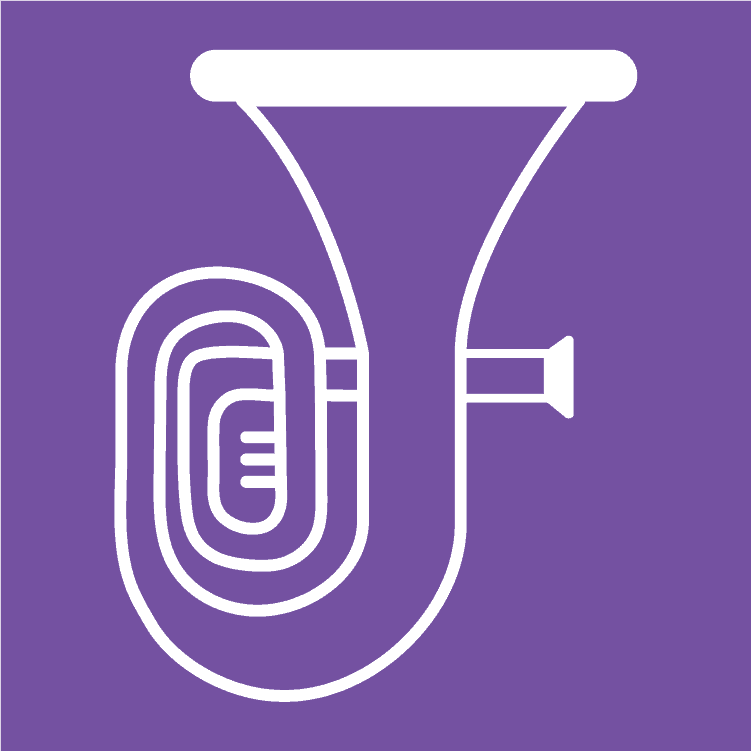
Things you should know before buying your first Tuba
To decide what Tuba is best, you’ll need to think about what you intend to do with it. Now, I know you’ll be thinking “what a silly thing to say! I intend to play it!”, but choosing a musical instrument is based on a series of choices that include:
- What sort of budget do you have? Remember, as with most things in life; you get what you pay for – so try to have the largest budget you can afford.
- What type of music do you want to play? Having a custom-built £30,000 Yamaha orchestral Tuba is probably not the best instrument for you if you’re hoping to just learn the basics. There are still some fantastic instruments around which are ideal if you have just started learning and eventually want to join your local brass band or orchestra.
- Am I strong enough to take my instrument from home to lessons or rehearsals myself? Some Tubas can be big and heavy. Don’t worry! There are many strong, plastic cases available which have sturdy wheels to help you transport the instrument. Some ‘soft’ cases enable you to carry your instrument on your back in fabric or leather bags
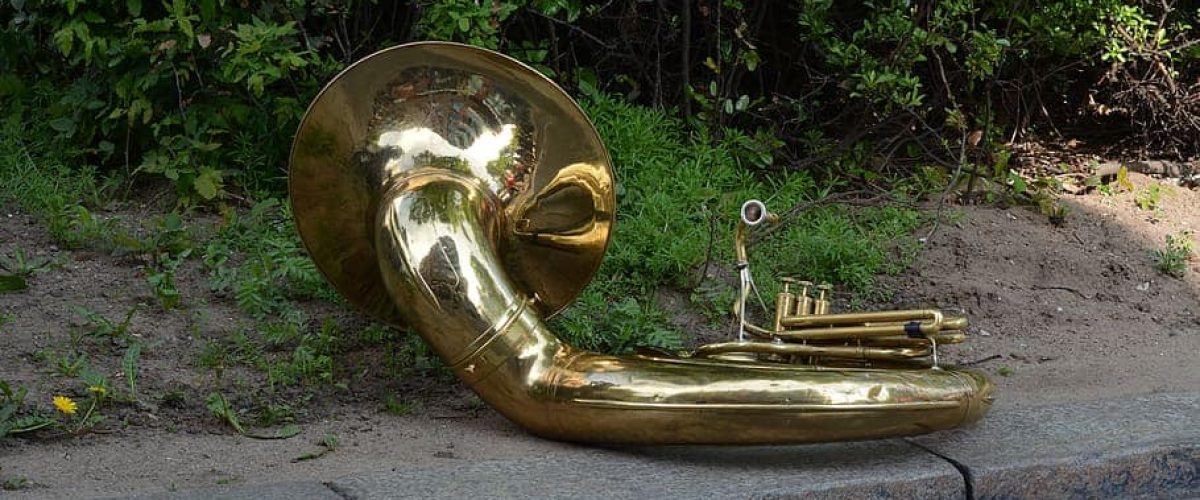
What sort of Tuba should I buy?
If the world of music is new to you, do not panic! This guide will keep things simple for you. Just like the Bass Guitar in a rock band, the Tuba provides the low pitched notes to brass bands, wind bands and orchestras. If a piece of music was a building, these bass notes would be the foundations on which every other instrument sits.
Most commonly in the UK, Tuba plays start on a Tuba pitched in E flat. To represent the pitch range they play, full-size Tubas are often labelled as EE Flat or CC Tubas. When becoming experienced with the E flat Tuba, you can always graduate to a larger Tuba pitched in C. This C Tuba is found in larger ensembles such as the symphony orchestra.
In Europe and in America, other Tubas are used. Large Tubas pitched in B Flat and smaller Tubas in F are used in bands and orchestras as well as C Tubas. Due to the historically wide usage of E Flat Tubas amongst players in British bands, this instrument has become commonplace in U.K. orchestras. The C Tuba is then opted for when music is better suited to that instrument.
When starting out you will be having fun learning new sounds, new tunes and techniques. The most fun you will have from music is by making it with other people. It is worth aiming to join a local band or orchestra to share your talents, sound and maximise the joy you can have.
Here are the most common places in which you could find an opportunity to play in a group. The photos show some famous examples of these types of groups you may have heard already:
Cory Brass Band
Local Brass Band: These bands are made up of brass instruments only. This line up of instruments dates back to Victorian times where many factories, mills and mines had after-work music clubs. Brass bands to this day have contests with bands around the country.
Tubas found here: E flat Tuba and the larger B flat Tuba. In this type of group, the Tuba is called a BASS. Both the E flat and B flat Bass provide the bassline for the band, but the B flat Bass plays slightly lower notes than its E flat version. (Music is written in treble clef).
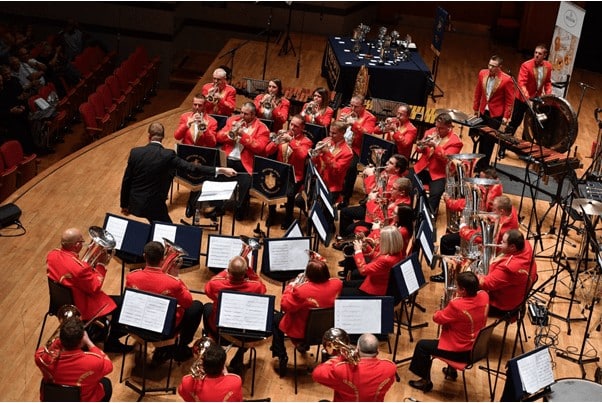
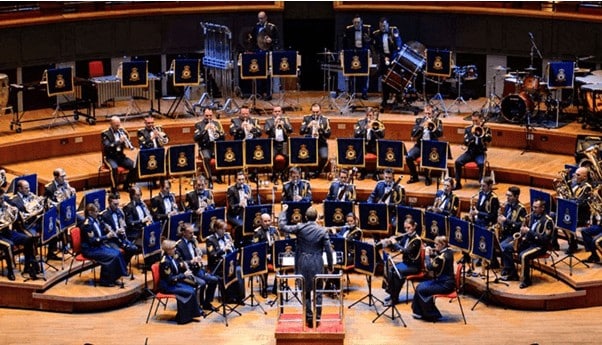
The Central Band of the Royal Air Force
Local Wind Orchestra: This type of group joins both wind and brass instruments together. Much of the music written for this type of group are scaled-down versions of famous orchestral works as well as familiar music adapted from stage and screen.
Tubas found here: The majority of wind orchestra Tuba music is written in concert pitch in bass clef. Once you are comfortable reading and playing in concert pitch, then the E flat Tuba works brilliantly here.
The London Symphony Orchestra
Local Orchestra: In the orchestra, all families of instruments are present. This means that the Tuba plays less often, but at times the music can be very demanding. A full range of sounds and colours are present here giving a full ‘technicolour’ experience of sounds.
Tubas found here: The E Flat Tuba and C Tuba are most commonly used

Types of Music
Classical Music
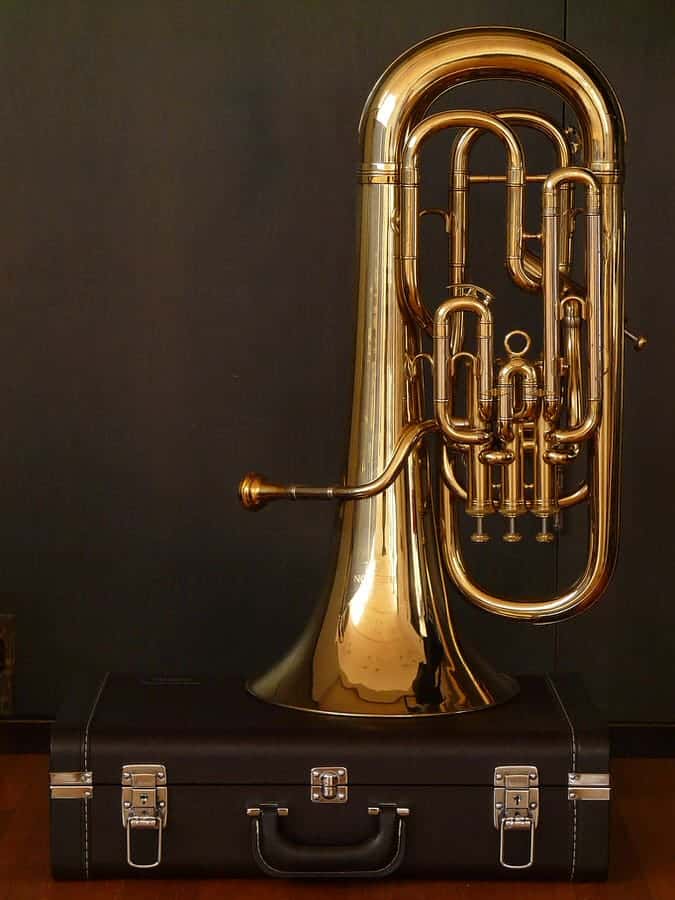
The majority of music featuring the Tuba is classical. You can enjoy playing adapted versions of famous classical works within bands, solo books or as part of an actual orchestra you belong to. Many of the finest orchestral Tuba players began in local bands and made their way to the finest orchestras in the world.
Popular Music
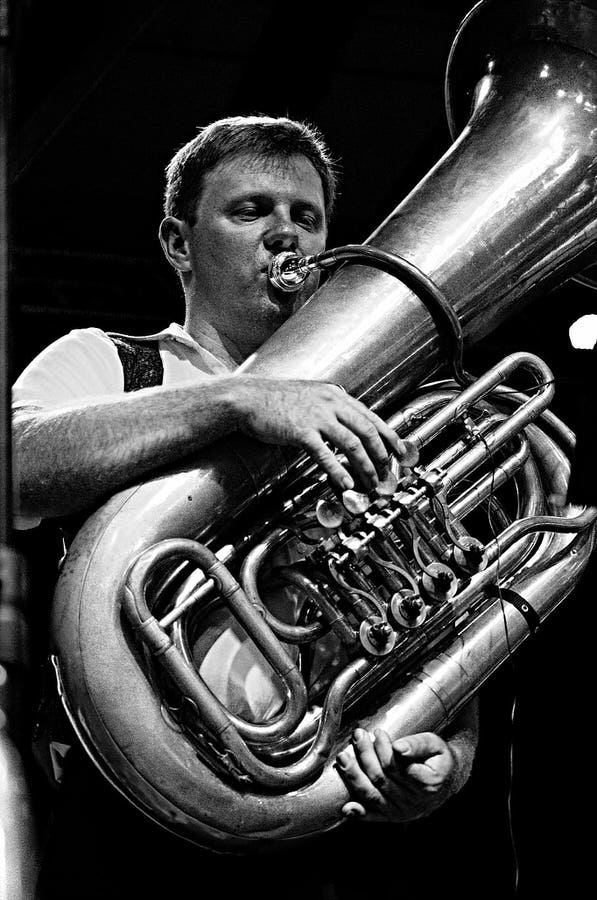
You will learn skills in a band or orchestra such as playing in a group and working as a team. These skills can transfer to popular music as many of the rules are the same! Many artists such as David Bowie, Sir Elton John and Sir Paul McCartney have used Tuba players as session musicians on albums and singles. Form your own band if you would like to!
Types of Tuba
E Flat Tuba/Bass
B Flat Bass
C Tuba
E Flat Tuba/Bass
3 valves on junior models, 4 valves on intermediate and professional models.
It is likely that you will be quite young when you begin learning. Don’t be put off by the size and weight of Tubas! For younger or beginner players, smaller tubas (c.80 x 40cm) are available with just three valves. These piston valves are the ‘buttons’ which need to be pressed down in certain patterns to change the notes we play.
When you are a bit bigger or older, the time will come to move on to a larger more grown up instrument. These larger E Flat Tubas usually have four valves as the instrument is larger and slightly more complex. This lets you play much lower and therefore more challenging, fun music! Sizes are c. 90 x 60cm.
B Flat Bass
4 valves
Found in brass bands, these four valve instruments are not as common as the E Flat bass. If you grow up where brass bands are commonplace, you may fall in love with the sound of a B Flat Bass. If you want to progress from the E Flat Bass to something larger, why not ask your brass band if they have a B Flat Bass? Size c. 1m x 60cm
C Tuba
commonly 4 ‘front action’ valves plus a rotary valve for the thumb
This is often the instrument you will progress to once you have moved through your local brass band and county wind orchestra before ending up in a local symphony orchestra. Pitched in C, this deep sounding Tuba requires different fingering to the E Flat Tuba, but mirrors the fingering used by the E Flat Bass in brass bands. Size c. 1m x 70cm
Similarly to how golf clubs are different sizes and shapes to help hit a golf ball in different ways, instruments are no different. The Tuba is more straightforward than a gold club however! E flat and B flat basses are long tubes coiled up differently to the C Tuba. The C Tuba uses wider tubing and is pitched lower, creating a deeper, wider (not louder) sound.
How To Choose A Tuba - Summary
Let’s keep things easy…
If you are a younger beginner, go for a junior-sized three-valve Tuba.
If you are a bit older or stronger and have the budget for a larger instrument, go for an intermediate level but a full-size instrument with four valves.
If you are more interested in getting involved with a wind band or an orchestra instead of a brass band, a C Tuba is worth aiming for one day after graduating from an E flat Tuba.
It is worth noting that if you progress really well with this fantastic hobby and you have the equipment, you will start to find that some music works better on a C Tuba than on the E flat Tuba. This depends on which octave the music is written in as well as what key it is in. Your teacher will be able to assist with this.
Hopefully the above helps you make up your mind about what type of instrument to buy. Now you’ll need to do some research over which exact model to go for. Below are some images of some readily available instruments.
About the Author
Carl Woodcroft
Carl has performed with orchestras including the Orchestra of the Royal Opera House, Covent Garden. He has recorded with Bastille at Abbey Road Studios, played at Glastonbury and the BBC Proms. Carl studied at the Royal Academy of Music and has also performed for The Queen. Interestingly, he has appeared in film and TV as a musician in The Ipcress File remake, Military Wives and Mission: Impossible – Rogue Nation. Carl teaches at Royal Holloway University, Highgate School, Surrey Arts and as a visiting guest at Junior Guildhall.
Other posts by this author
Books, Products & Gizmos
Every Friday, I distribute an exclusive email showcasing the four most awesome things I’ve reviewed or used that week.
It could include things like exceptional special gifts or possibilities to have interaction with me personally, instruments, ebooks, cool gadgets, tunes, brand-new techniques/tips, and — obviously — a lot of exciting musical things I dig up from around the world.
Only accessible for anyone who is a subscriber to the newsletter.
Read the next post in this series:




